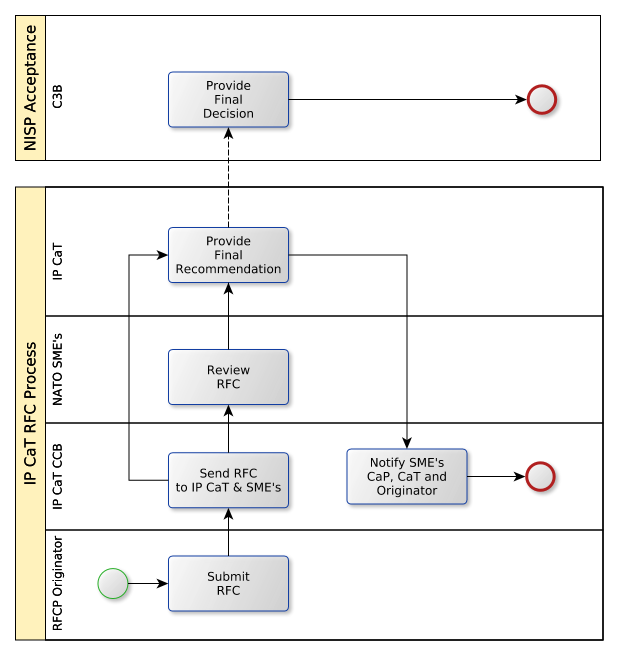Chapter 5. Configuration Management
36. The NISP is updated once a year to account for the evolution of standards and profiles. Updates to the NISP are handled through a "Requests for Change" (RFC) process, initiated by any stakeholder or by specific processes for review purposes, initiated by the IP CaT.
5.1. Request for Change (RFC)
37. Request for Change (RFC) to the NISP will be processed by the IP CaT, following the process in the graphic below:

38. The RFC contains all information required for the NISP management by IP CaT; The detailed information about standard or profile is handed over as attachments to this form. A notional RFC form with example information is presented below:

39. The primary point of contact for RFC submission is the IP CaT. RFCs may be submitted to the IP CaT via the Change web site or via email to the indicated email address with attachments.
40. Review of RFCs will be coordinated with the responsible C3 Board substructure organizations where appropriate.
41. The IP CaT reviews the submissions in dialog with national and international bodies. Based on that review, the RFC will be formally processed into the next version of the NISP; or returned to the originator for further details; or rejected. The IP CaT will attempt to address all RFCs submitted by 1 September into the next NISP release. RFCs submitted after this date may be considered for inclusion at the discretion of the IP CaT, or will be processed for the following NISP release.